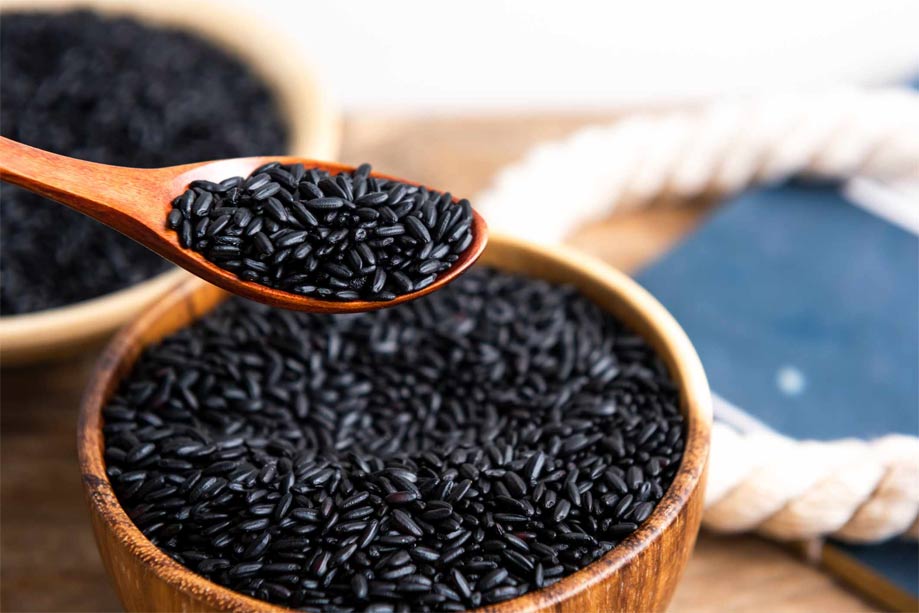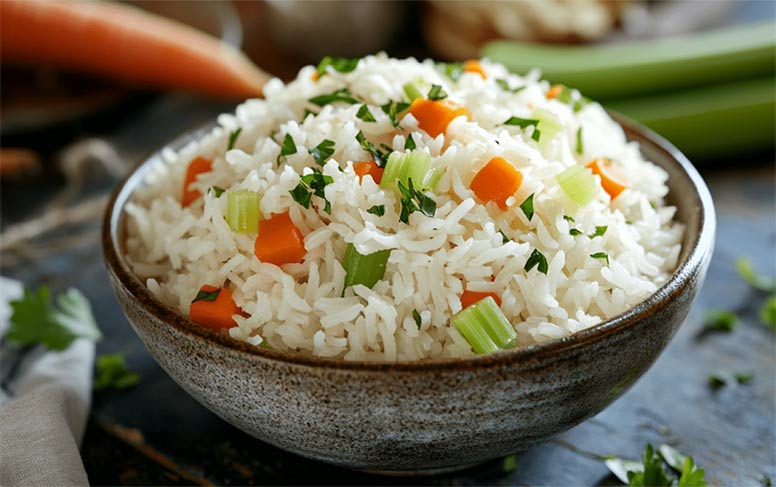Which type of rice is best for health?
While some varieties of rice may contain more fiber, protein, or antioxidants, all types of rice can fit into a nutritious, well-rounded diet .

Rice is a staple food in many countries and provides billions of people around the world with a cheap, nutritious source of energy. There are many varieties of rice that vary in colour, flavour and nutritional value.
This article discusses the most nutritious types of rice and how to maximize the health benefits of whichever rice you choose .
Brown rice
Whole grain rice like brown rice is less processed and refined than white rice. As a result, brown rice contains more nutrients like fiber and minerals like magnesium, iron, and zinc.
However, since brown rice is higher in potassium and phosphorus, people with kidney disease may need to consult their doctor before including brown rice in their diet.
Several studies have found that eating whole grains has health benefits including weight loss and blood sugar control. According to one study, regularly consuming 1 cup (202 grams) of brown rice can reduce the risk of diabetes by up to 60%.
Nutrients in 202 grams of long-grain brown rice, cooked (DV = Daily Value)
| Nutrition | Quantity |
| Calories | 248 |
| Carbohydrate | 52 grams, 19% DV |
| Fiber | 3.2 grams, 11% DV |
| Protein | 5.5 grams, 11% DV |
| Total fat | 2 grams, 3% DV |
| Road | 0.458 grams |
| Starch | 50.1 grams |
| Vitamin B1 | 30% of DV |
| Vitamin B2 | 11% of DV |
| Vitamin B3 | 32% of DV |
| Pantothenic acid | 15% of DV |
| Vitamin B6 | 15% of DV |
| Folate | 5% of DV |
| Iron | 6% of DV |
| Potassium | 4% of DV |
| Copper | 23% of DV |
| Sodium | 8.1 mg |
| Manganese | 86% of DV |
| Phosphorus | 17% of DV |
| Magnesium | 19% of DV |
Brown rice also contains the following minerals:
- Vitamin E
- Zinc
- Selen
- Tryptophan
Black rice
Black rice is sometimes called forbidden rice because it was reserved for royalty in ancient China.
Black rice is a whole grain, non-sticky, medium grain rice that has a deep purple color and a nutty, slightly sweet flavor. It is high in fiber and antioxidants called anthocyanins, which are known for their health benefits. Compared to other types of rice, it is higher in protein and iron.

Nutrients in 210 grams of black rice, cooked
| Nutrition | Quantity |
| Calories | 305 |
| Carbohydrate | 70 grams, 25% of DV |
| Fiber | 0 grams |
| Protein | 6 grams, 12% DV |
| Sodium | 11 mg |
Red rice
Red rice is a richly colored, fiber- and protein-rich rice. Popular varieties include Himalayan red rice and Thai red rice, which are the two most popular types of red rice. In Asia, red rice is often fermented, creating red yeast rice.
Red yeast rice has anti-inflammatory, cholesterol-lowering, heart-protective, anti-cancer, and anti-diabetic properties.
Nutrients in 45 grams of dry red rice
| Nutrition | Ingredient |
| Calories | 1660 |
| Carbohydrate | 34 grams, 12% DV |
| Fiber | 5 grams, 18% DV |
| Protein | 4 grams |
| Total fat | 1.5 grams, 2% DV |
| Iron | 2% of DV |
| Potassium | 2% of DV |
| Sodium | 30.2 mg |
Wild rice
Although wild rice is a seed and not a grain, it is considered a type of rice. In North America, wild rice is classified as a whole grain product and is sold as a health food.
Wild rice is higher in protein and lower in fat and sugar than white rice. It is also rich in nutrients such as B vitamins, vitamin E, calcium, iron, phosphorus, potassium and zinc.
Wild rice contains flavonoids, which have antioxidant and anti-inflammatory properties that may help combat oxidative stress and prevent disease.
The high fiber content of wild rice may also help lower cholesterol levels and reduce the risk of type II diabetes.
Nutrients in 164 grams of cooked wild rice
| Nutrition | Quantity |
| Calories | 166 |
| Carbohydrate | 34.9 grams |
| Fiber | 2.95 grams |
| Protein | 6.54 grams |
| Total fat | 0.558 grams |
| Road | 1.2 grams |
| Vitamin B1 | 0.085 mg |
| Vitamin B2 | 0.143 mg |
| Vitamin B3 | 2.12 mg |
| Pantothenic acid | 0.253 mg |
| Vitamin B6 | 0.221 mg |
| Pantothenic acid | 42.6 µg |
| Sodium | 4.92 mg |
| Potassium | 166 mg |
| Manganese | 0.462 mg |
| Phosphorus | 134 mg |
| Magnesium | 52.5 mg |
In addition, wild rice also contains the following minerals:
- Iron
- Calcium
- Zinc
- Copper

Is eating white rice harmful?
While there is nothing wrong with incorporating white rice into a healthy diet, white rice is less nutritious than whole grain rice. During processing, the hull, bran, and germ of the rice grain are removed.
White rice varieties include short-grain (arborio), medium-grain (Japanese-style) and long-grain (basmati, jasmine and doongara), with varying glycemic indexes. Basmati rice has a low glycemic index, but some other white rices have a higher glycemic index.
With the exception of basmati and doongara, other types of white rice are absorbed quickly by the body. This means they have a greater impact on blood sugar levels. White rice is also lower in nutrients such as fiber, protein, vitamins and minerals.
Nutrients in 3 ounces of cooked medium grain white rice
| Nutrition | Ingredient |
| Calories | 242 |
| Carbohydrate | 53.2 grams |
| Protein | 4.43 grams |
| Total fat | 0.391 grams |
| Vitamin B1 | 0.037 mg |
| Vitamin B2 | 0.03 mg |
| Vitamin B3 | 0.744 mg |
| Pantothenic acid | 0.764 mg |
| Vitamin B6 | 0.093 mg |
| Folate | 3.72 µg |
You should read it
- Cause the rice cooker does not turn on and how to fix it
- Learn the advantages and disadvantages of the 4 most popular electric rice cookers today
- Which diamond rice cooker is the best?
- What is smart rice barrel? Should we use smart rice barrels?
- Tell you how to cook delicious rice with a rice cooker
- 8 great uses of rice water
 Is it better to eat small meals or large meals?
Is it better to eat small meals or large meals? Typical symptoms of measles to watch out for during an outbreak
Typical symptoms of measles to watch out for during an outbreak What supplements should be avoided if you have arthritis?
What supplements should be avoided if you have arthritis? Study: Consuming too much salt increases the risk of stomach cancer
Study: Consuming too much salt increases the risk of stomach cancer Simple ways to relieve stomach pain at home
Simple ways to relieve stomach pain at home Which part of the shrimp should not be eaten?
Which part of the shrimp should not be eaten?